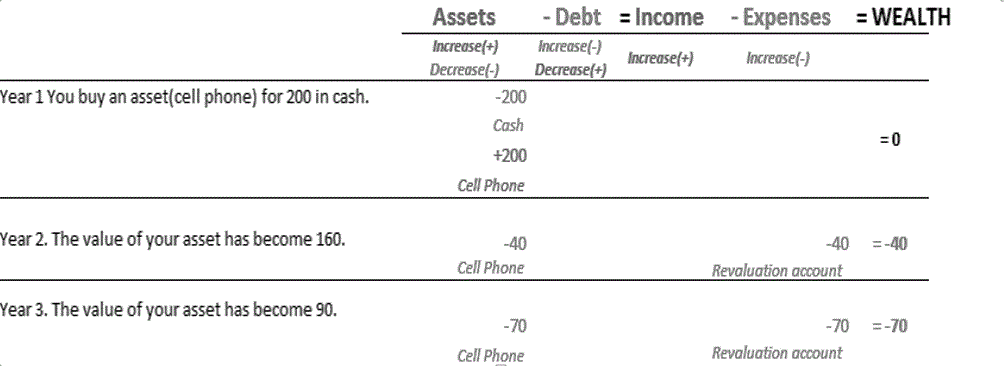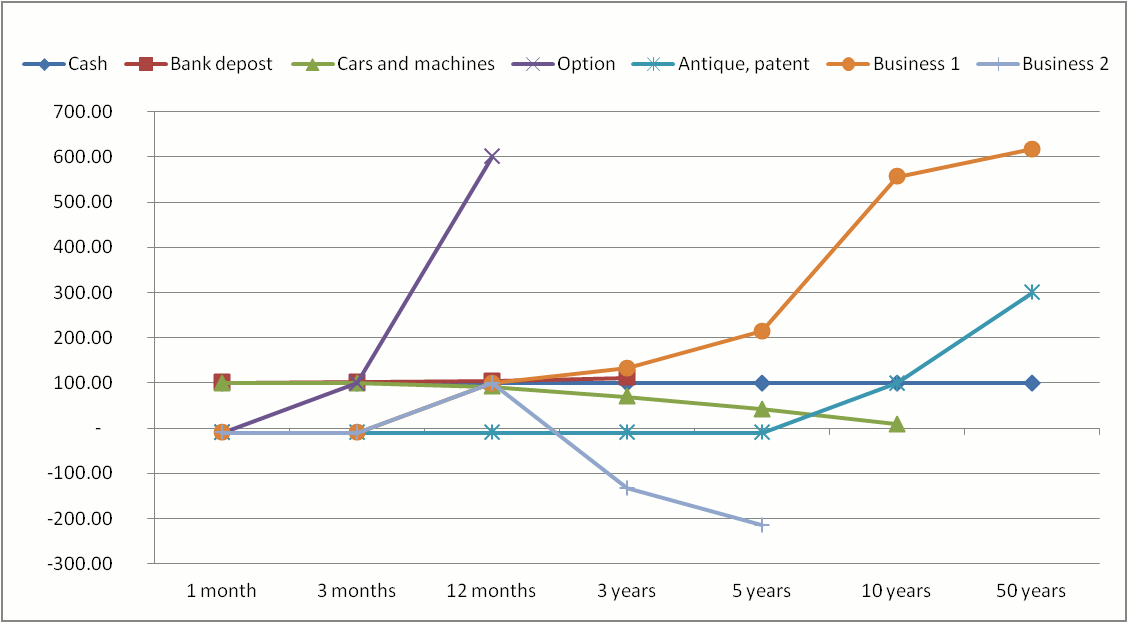How do we value things?
Purchased items are easily valued, but only initially – at the time of the purchase. You’ve paid $100 for a new gadget, and that’s how much it is worth. But if you have bought an asset, what happens to its value over time?
A life of an asset

John Hudson: Today I looked over my old car. I understand the definition of an asset – something we own that enables us to generate income, and/or which has significant material value over a long period. But what happens to our assets over time?
Thomas: Well, you may have inner feelings about an asset, but over time most tangible assets become more and more obsolete – up to a point where they are unusable and have only a scrap value.
Sri Humana: And sentimental value.
Thomas: Correct. So, in most cases, the value of our assets decreases over time. This is due to physical obsolescence or technological obsolescence. Accountants call the process by which assets become obsolete “depreciation.” Over the years, your assets become expenses in your revaluation/depreciation account.

There are two things I can advise you about asset management. First, challenge any asset’s value periodically (say, once a month or once a year). This means revalue your assets using market prices or some acceptable model. Second, take into account an asset’s useful life (estimated) when planning its use.
John Hudson: Thank you, Thomas, for the insights. Too bad for my old car and its sentimental value.
Thomas: I have to tell you, there are some assets that do increase in value over time. Things like land, works of art, wine and whiskey, business investments and shares.
Some questions for you:
- Can you think of other assets which increase in value over time?
- Do you think it is appropriate to account for revaluation income if there is no realized gain – that is, if there has been no cash flow?
The life of an Asset-2 – case study
A previous article talked about what happens to your assets over time, from an accounting perspective. We also had a general discussion about the different types of material assets. Now let’s try to combine these two things, and have a look at what can happen to assets in each of the different classes, over their lifetimes.

- Cash stays constant over time, though your money may lose purchasing power due to inflation. So, $100 in cash will still be $100 dollars in 50 years, but it may not buy as much at that time as it would today. (Or it may even buy more!)
- Bank deposits may earn you some income in the form of interest. Interest rates vary, typically from 1% up to 9%, depending on general political factors and other risks involved. In our example, the annual interest rate on our deposit is 4% – so the yield over three years’ time is $12.
- Cars and machines typically have a useful life of five to ten years; their value decreases progressively over that period. Here we have not taken into account the purposes for which you are using these assets. For example, they may be involved in production of goods, which could bring you profits in the thousands of dollars. Ultimately, the value of such fragile assets decreases over time, as they become old and inefficient.
- The term option, as we’re using it here, means a special type of contract that may earn you big money if certain rare events occur. In buying an option, you pay very little, compared to your potential gain. This is similar to buying a lottery ticket. The difference is that your likelihood of winning the lottery jackpot is easily calculated; the probability of the event or events covered by an option is not easily estimated – there are just too many variables involved.
- Antiques and patents have properties similar to options, but in general, more time must pass before you see the results of your investments. The painters of the most expensive paintings are dead.
- Owning a business (1 and 2 in our example chart above) may lead to greater-than-expected gains or greater-than-expected losses, depending on many complex factors.
It is up to you to choose which path you want to follow here, but don’t forget to determine your “risk tolerance” first.
The examples in the chart above illustrate what can happen with different asset types over their lifetimes.